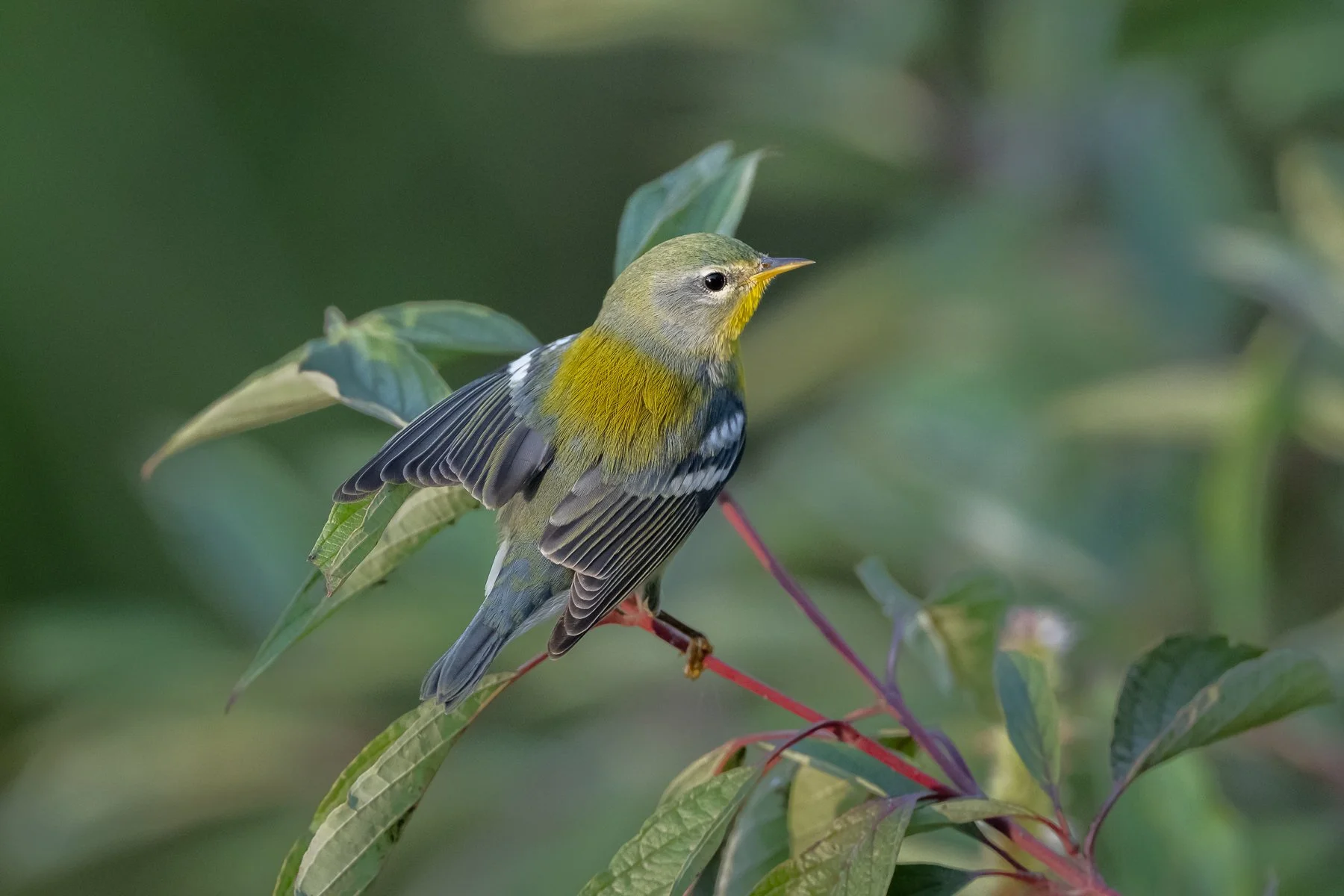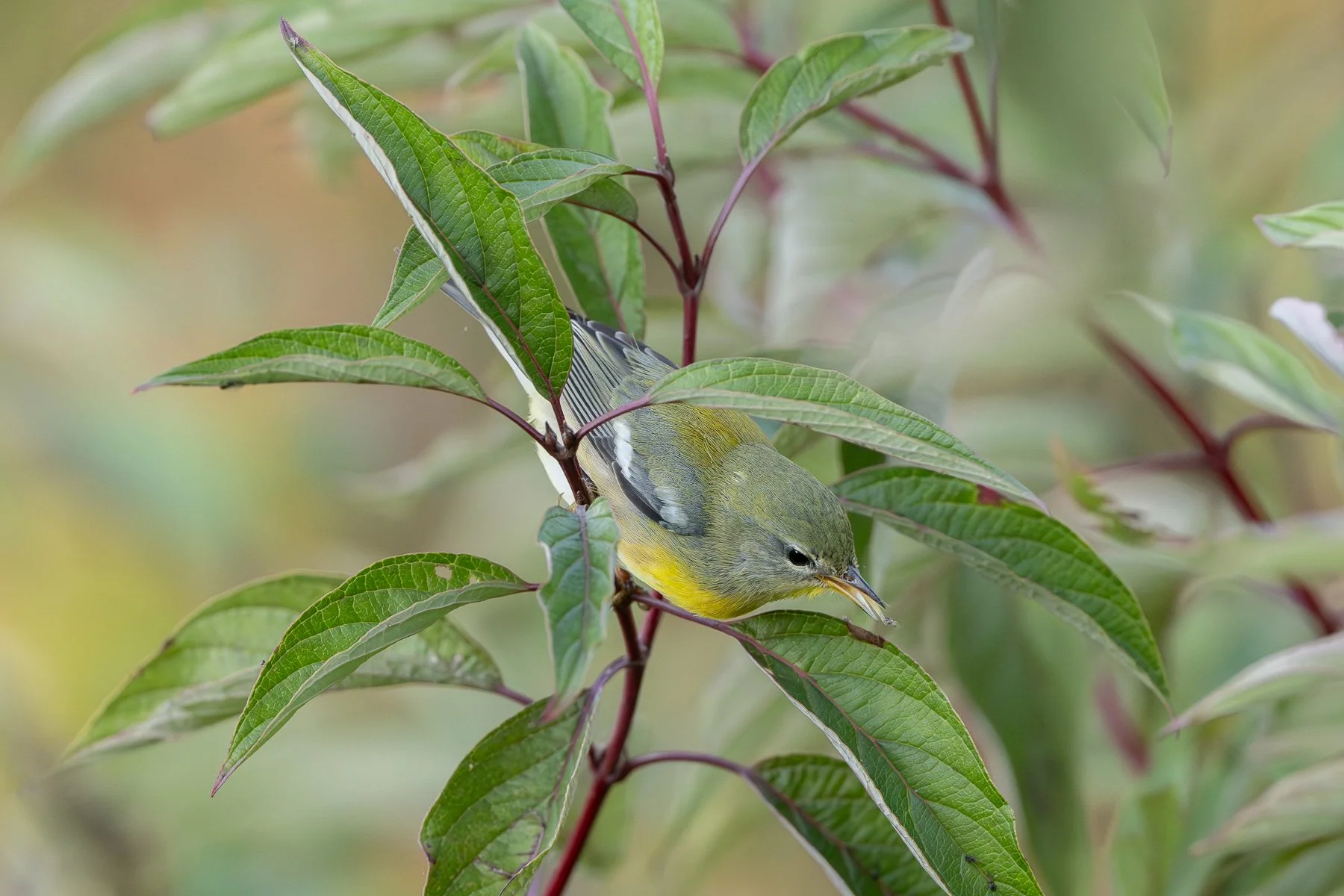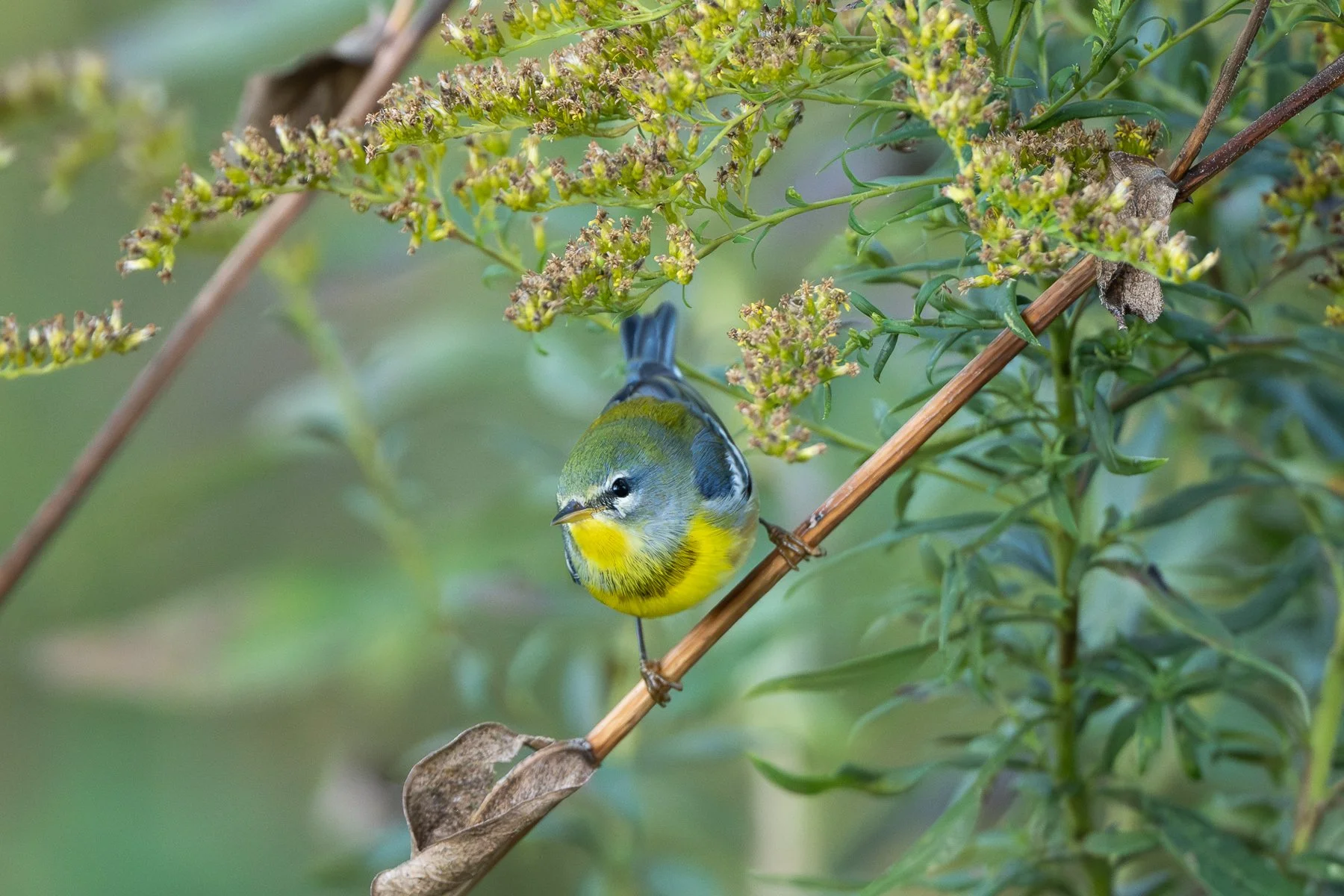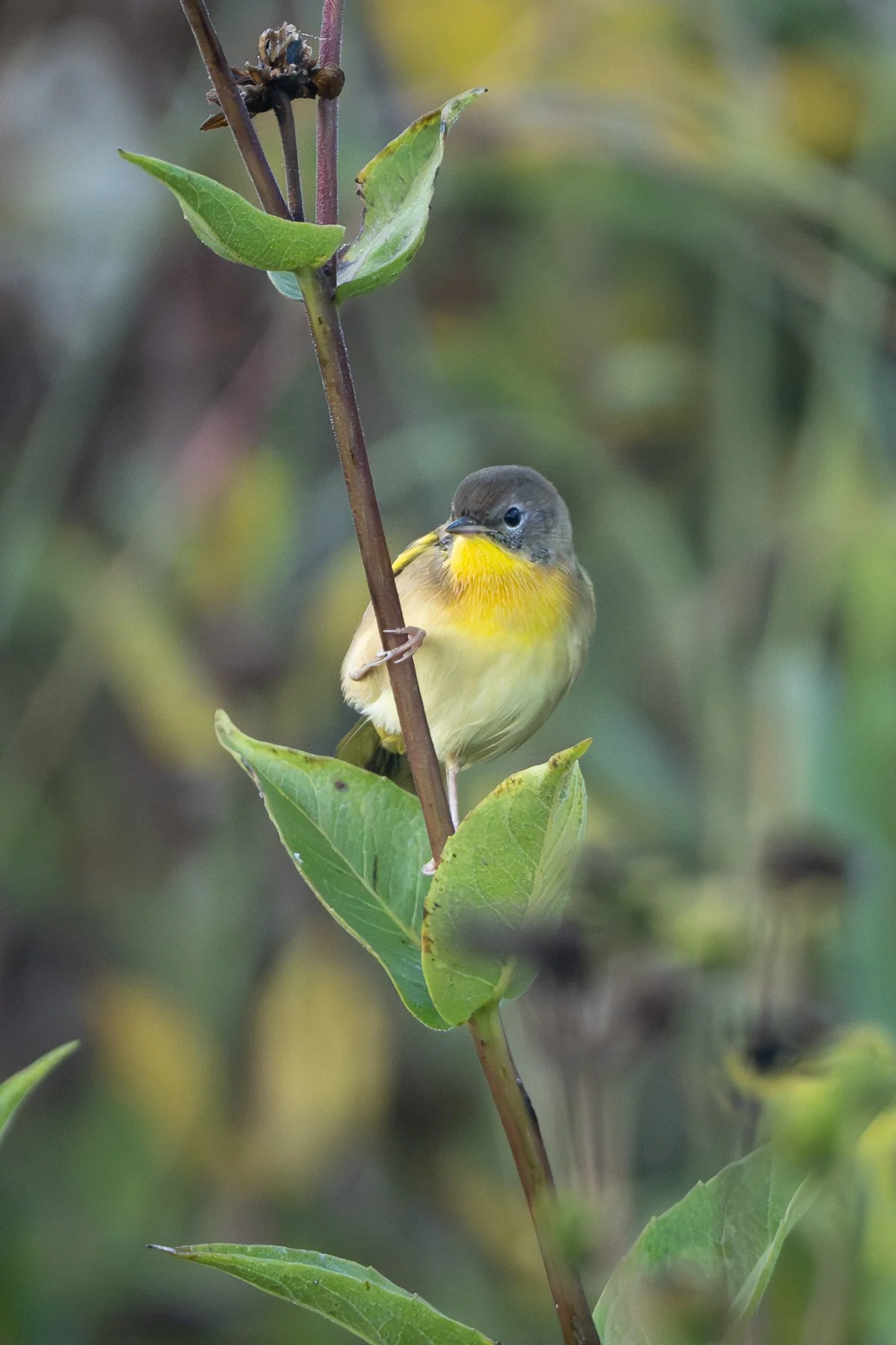Northern Parulas are described as acrobatic feeders, often hanging upside down (photo by Gary Shackelford).
When I reminisce about sightings of the Northern Parula, I imagine walking along a stream in Missouri and hearing a rising buzzy trill from a treetop. A flash of yellow and a chestnut necklace catch my eye and there it is—a tiny bird, actively moving along the tips of the foliage in the upper canopy. It has a blue-gray head, interrupted eye ring, and yellow throat and chest.
About two weeks ago, I was looking out over the corner of a prairie at Fair Meadows Sanctuary where a tree line merges into a thicket of red-osier and alternate-leaved dogwoods. A bird moving intermittently through the bushes about four feet above the ground got my attention, and into view came a small warbler with a gray head, yellow throat and necklace—a Northern Parula! It was moving through the dogwood shrubs, gleaning tiny insects from under the leaves. Several more were seen after that.



This was not the Northern Parula habitat of my recollection, but later, I read a “Backyard Tip” in All About Birds which advised readers, “creating a bird-friendly backyard for Northern Parulas, even if they don’t breed in your area, may help them out during migration.” Well, there you go!
Northern Parulas breed in the lower Midwest and southeastern United States, and in northern Wisconsin, Minnesota, New England, and eastern Canada. There is a breeding gap in the upper Midwest. The reason for this unusual breeding distribution is unknown, but it may have to do with their nesting preference for beard moss in the North and Spanish moss in the South. It is hypothesized that air pollution in the upper Midwest limits the growth of the epiphytes (moss and lichens) the birds use for nests.
An immature Northern Parula has a gray head, yellow throat and upper chest with a wash of orange (photo by Gary Shackelford).
Another interesting feature of the Northern Parula is its use of microhabitats for feeding. When other species are breeding in the same area, the Northern Parula forages in its “usual niche” at the edge of branches in the upper canopy. If it is the only warbler species in the area, it expands its feeding area into the lower canopy and inner branches.
Most Wisconsin Northern Parulas migrate through Florida and winter in the Caribbean. Some from the western portion of their nesting range migrate south through Texas and Mexico and winter in the Yucatán Peninsula and Mexico.
I hope the food and rest provided by Fair Meadows will give this beautiful bird what it needs to reach its winter home.
Written by Penny Shackelford, Fair Meadows Sanctuary resident manager






